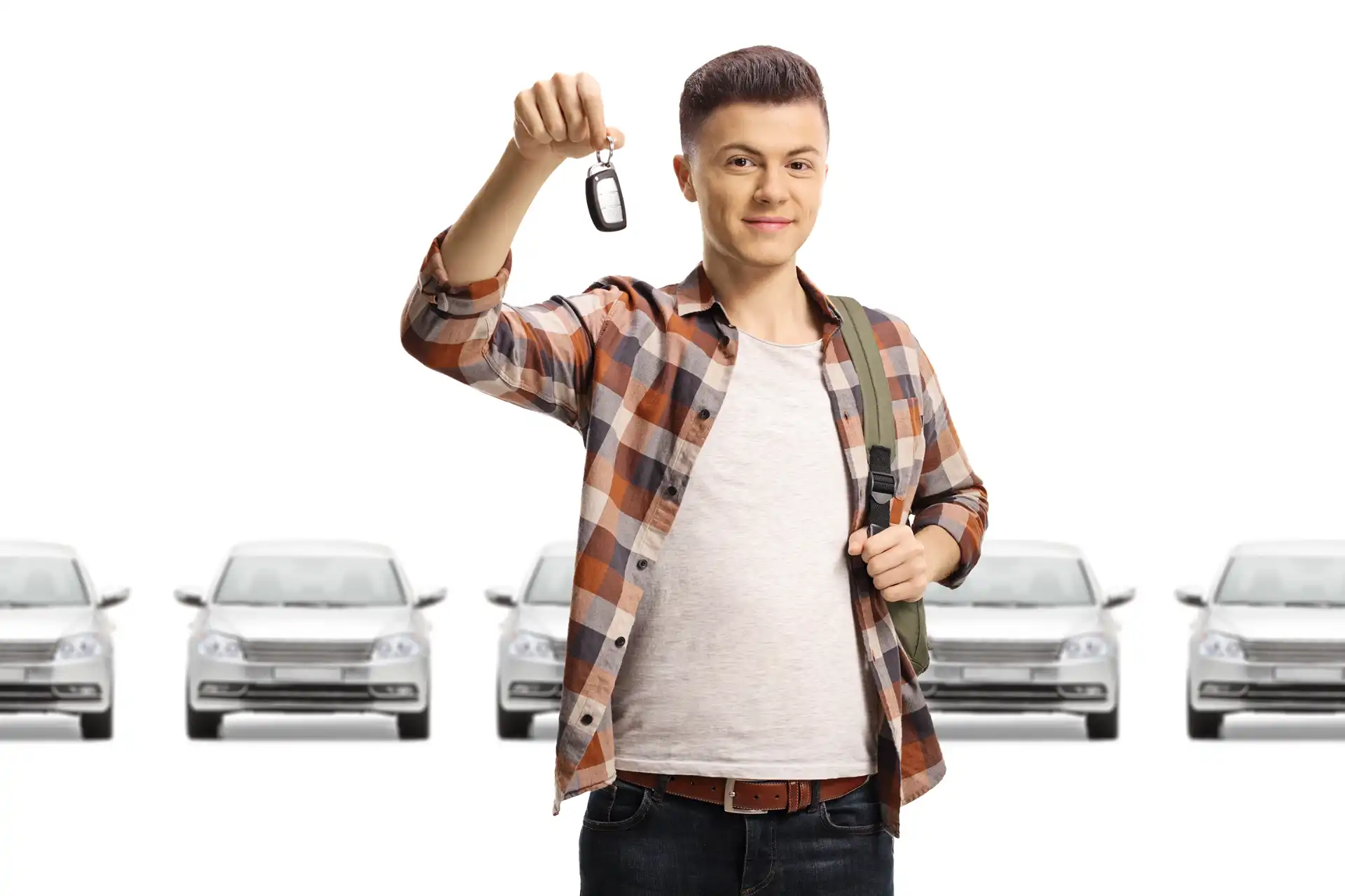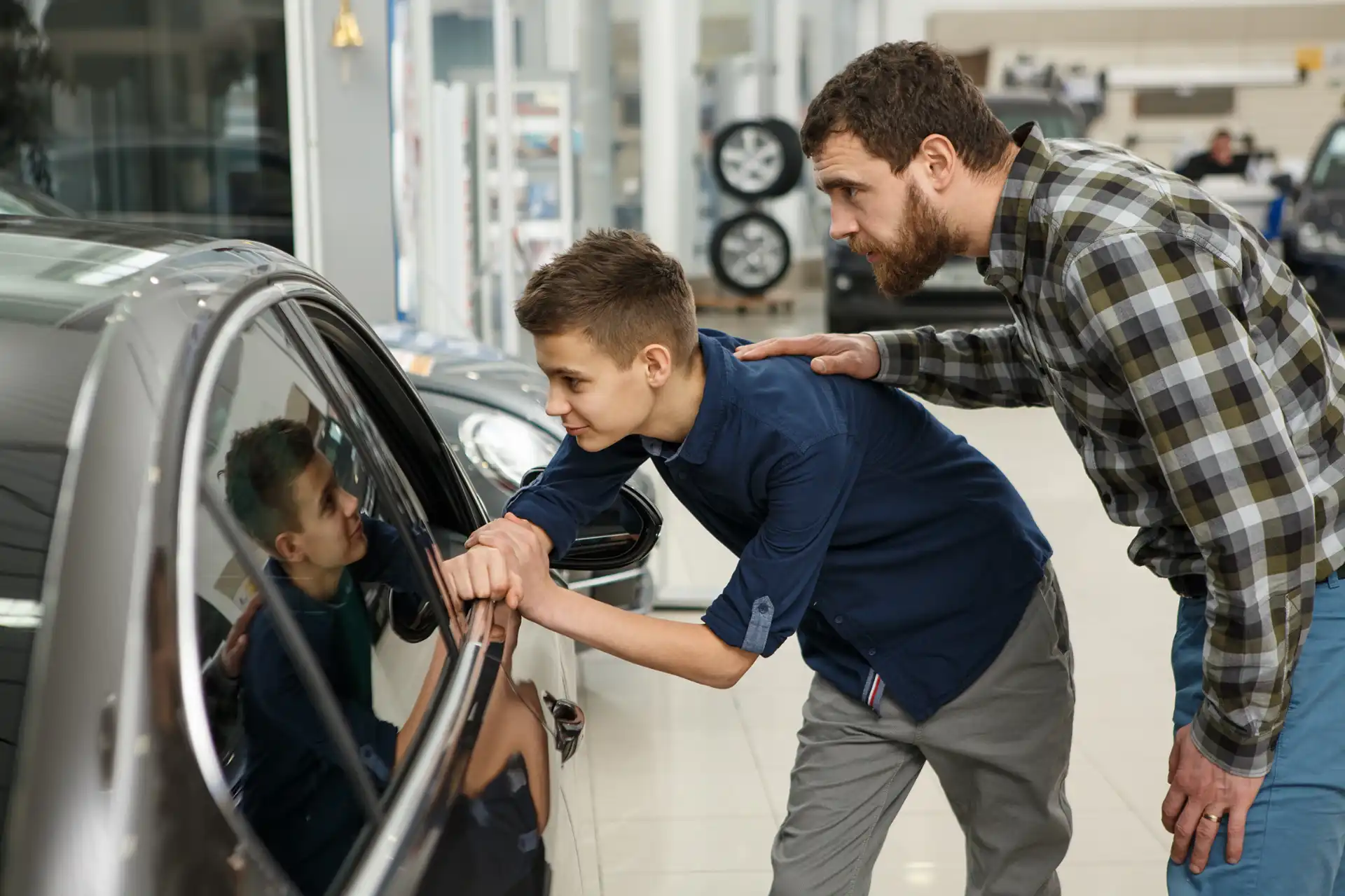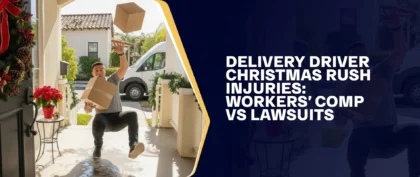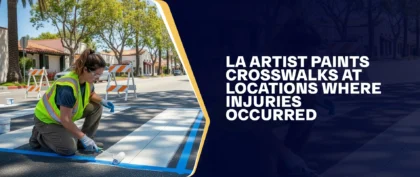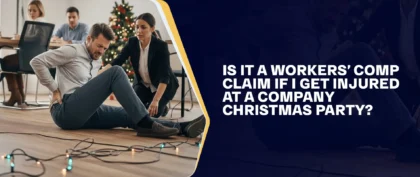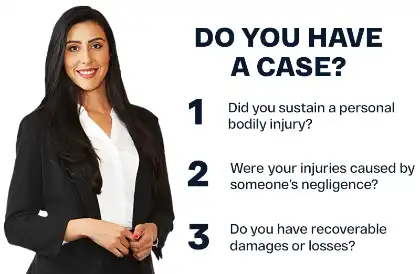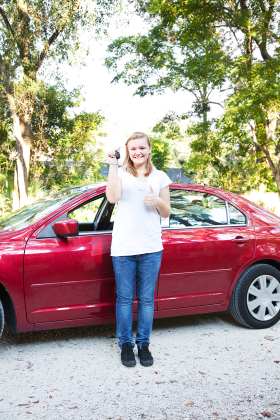
New Consumer Report Reveals Safest Vehicles For Teen Drivers
Approximately 13.2 million teen drivers are on the roads every year, making up approximately 6.4 percent of drivers on the road. When it comes to teen drivers, the world takes a collective effort to make sure that the roads are safe for them and everybody on them.
With drunk driving and distracted driving statistics indicating many dangers on California roads for teen drivers, they need safe vehicles. According to National Highway Traffic Safety Administration (NHTSA) data from 2019, car crashes resulted in injuries for about 205,000 teen drivers and 2,042 fatalities.
Statistics for teen drivers on the roads are grim and deadly. Ensuring they are in safe vehicles helps to keep them off those statistics lists. IIHS and Consumer Reports have produced an updated list of safe vehicles for teen drivers.
This list provides a collection of safe vehicles for teens, broken down into three categories: used cars, good choices of used cars, and recommended used vehicles. These are cars picked by Consumer Reports to help parents and guardians keep their teens safe on the roads.
The study indicates that for families, reliability and affordability are the second and third priorities when choosing a vehicle for their teens, the first being safety. When you are purchasing vehicles for a teen, don’t forget to check for recalls with the National Highway Traffic Safety Administration (NHTSA) agency if you are buying used. You’ll want to check this database for new recalls every six months.
At Arash Law, we know it is not just teen drivers who are in collisions on California roads. We advocate for all drivers, including teenagers, to operate safe vehicles that provide reliable protection. If you or your teen has been in a car accident, we can help you pursue compensation for your injuries. Call our California car accident attorneys at (888) 488-1391 to book a free initial consultation, during which we can review your case.
Safety Tips For Teen Drivers
When you are a teen driver or have a teen driver on the road, inexperience, immaturity, and nervousness are going to play a role in your driving skills. Getting the safety tips for teen drivers down will help you feel more confident on the roads.
Driving is a choice for freedom for many teens, but that is not the kind of confidence they need. They need the confidence that comes with feeling safe. Teens statistically have higher crash rates and more fatalities because they are using the wrong confidence on California roads.
They feel grown-up and legally able to make adult decisions, but that doesn’t always go hand in hand with safe driving. So they will make big decisions and then make mistakes on the road. It is even more difficult for them to make safe and confident decisions when they have their friends with them. A bad decision may lead to a reckless driving accident.
That is why the District of Columbia and all 50 states have graduated driver licensing (GDL) to ensure that teens spend the time they need to on the roads. Understanding the GDL laws of your state will help you and every teen driver become practiced on the roads.
Follow these teen driver safety tips for additional safety and security:
- Establish ground rules with a teen driver in your home. Make sure your teen follows them and enforce these rules as necessary.
- Restrict any driving after evening hours, and don’t let them use their phone when driving.
- Ensure that seatbelt rules are enforced, with seatbelts being required at all times.
- Teen drunk driving remains a significant concern, with studies showing teens who drink and drive face substantially higher crash risks than adults at similar blood alcohol levels. Have frank conversations with your teen about drinking and driving, as well as drug use. Remind them of the laws and the severe consequences of drinking underage. Remind them of the realities of drunk driving crashes. You may have to show them a video or two, and it may feel cheesy, but they work. These facts and statistics make a lasting impression. However, if someone else caused the accident, victims can seek help from DUI accident victim lawyers.
- Do what you want your teen to do. If you want your teen to stay sober to drive, do the same thing. Wear your seat belts, don’t drive at night if you don’t have to, and stay off your phone. When they are in the car, they are watching you.
- Supplement any teen driver’s education classes with additional practice sessions with a parent, a sibling who drives, or even a driving instructor.
When you are the guardian or parent of a teen driver, your life suddenly has an abundance of new responsibilities. Take care of everyone as soon as possible, and stay consistent. If a crisis occurs, we can help you explore your options. At Arash Law, our lawyers can assist you in seeking compensation for your losses. Call our California car wreck lawyers at (888) 488-1391 for a free case review.
Safer Vehicles For Teens
Consumer Reports has divided its updated safe vehicles report into the following categories:
| Best Choices Used | Good Choices Used | Recommended New Vehicles |
| Small cars | Small cars | Small cars |
| Midsize cars | Midsize cars | Midsize cars |
| Large cars | Large cars | Large cars |
| Midsize SUVs | Midsize SUVs | Midsize SUVs |
| Minivans | Minivans | Minivans |
2021 Best Choices Used Vehicles For Teens
The vehicles that are earning the best ratings from the Insurance Institute for Highway Safety (IIHS) are achieving high safety ratings in moderate overlap front, side, roof strength, and head restraint tests. They are also earning high stars on the driver’s side small overlap front test.
When rated by the NHTSA, these vehicles earned 4 or 5 stars in the front and side tests. Each vehicle weighs over 2,750 pounds and comes equipped with standard electronic stability control. They also have above-average scores for emergency handling, with above-average being considered a 3 out of 5 stars or higher. Day braking distances are measured at 145 feet or less.
Vehicles are excluded from the list when they have a claim frequency for medical payment or personal injury protection that is higher than average. If you are using the Kelly Blue Book estimates from May 2021 as a reference, please note that the prices listed there are and should be considered general guidance. These are vehicles with no options and the lowest trim levels.
The following criteria are used for each estimate:
- Vehicle in good condition
- Typical mileage
- Private party purchase
Best Choices – Used
| Small Cars | Model Years | Estimated Price |
| Mazda 3 Sedan or Hatchback | 2014 or newer (or built after October 2013). | $8,100 |
| Toyota Prius | 2014 or newer (or built after November 2013). | $8,600 |
| Hyundai Elantra GT | 2018 or newer | $15,200 |
| Subaru Crosstrek | 2017 or newer | $17,900 |
| Honda Insight | 2019 or newer | $18,200 |
| Toyota Corolla Hatchback | 2019 or newer | $18,300 |
| Kia Niro | 2019 or newer | $18,600 |
| Subaru Impreza Sedan and Wagon | 2019 | $19,400 |
| Midsize Cars | Model Years | Estimated Price |
| Subaru Outback | 2013 or newer (or built after August 2012). | $8,700 |
| Subaru Legacy | 2013 or newer (or built after August 2012). | $8,800 |
| Mazda 6 | 2014 or newer | $10,100 |
| Lincoln MKZ | 2013, 2016, 2018, or newer. | $10,300 |
| Honda Accord Sedan or Coupe | 2013 or newer | $10,900 |
| Volkswagen Passat | 2016 to 2017 | $11,400 |
| Toyota Prius V | 2015-2018 | $11,600 |
| Volkswagen Jetta | 2017 | $12,900 |
| Volvo S60 | 2016, 2018 | $14,100 |
| BMW 3 Series | 2017 or newer (or built after November 2016), 4-cylinder only. | $17,900 |
| Large Cars | Model Years | Estimated Price |
| Ford Taurus | 2014 | $9,600 |
| Hyundai Genesis | 2016 | $18,700 |
| Small SUVs | Model Years | Estimated Price |
| Mazda CX-5 | 2014 or newer (or built after October 2013). | $9,300 |
| Nissan Rogue | 2014, 2016-2018, 2020. | $10,100 |
| Subaru Forester | 2016 or newer | $13,500 |
| Honda CR-V | 2015 or newer | $14,800 |
| Kia Sportage | 2017, 2018, 2020 | $14,800 |
| Toyota RAV4 | 2015 or newer (or built after November 2104). | $14,900 |
| Honda HR-V | 2017 or newer (or built after March 2016). | $15,400 |
| Hyundai Kona | 2018 or newer | $15,800 |
| Buick Encore | 2018-2019 | $16,300 |
| Hyundai Tucson | 2018 or newer | $16,800 |
| Mazda CX-3 | 2019 or newer | $17,800 |
| Midsize SUVs | Model Years | Estimated Price |
| Chevrolet Equinox | 2017, 2019 | $13,700 |
| Nissan Murano | 2015 or newer | $14,800 |
| GMC Terrain | 2017, 2019 | $15,100 |
| Lexus NX | 2015-2016, 2018 or newer. | $16,000 |
| Kia Sorento | 2017-2018 | $16,500 |
| Hyundai Santa Fe | 2017-2019 (or built after March 2016). | $18,700 |
| Ford Edge | 2018 or newer | $19,600 |
| Mazda CX-9 | 2017 or newer (or built after November 2016). | $19,600 |
| Audi Q5 | 2016-2019 | $19,800 |
| Minivans | Model Years | Estimated Price |
| Toyota Sienna | 2015-2016 | $13,900 |
| Honda Odyssey | 2016 | $15,400 |
| Kia Sedona | 2017 | $15,600 |
Notes that include “built after date” refer to models where the manufacturer makes changes that improve model safety.
Good Choices – Used
For the listed vehicles with decent ratings with the IIHS, factors of moderate overlap front, roof strength, side, and head restraint were tested. Where they earned 4 out of 5 stars or 5 out of 5 stars, they were listed as safe vehicles for teens. Each vehicle has a weight of over 2,750 pounds and comes equipped with standard electronic stability control. Day braking distances are measured at 145 feet or less when the vehicles are going 60 mph.
Again, there are some listings that include a “built after” date. That refers to the time when a manufacturer improves the safety of a model with model changes at some point during the model year. You can learn when exactly a model was made from the sticker on the driver’s door.
| Small Cars | Model Years | Estimated Price |
| Mazda 3 Sedan or Hatchback | 2012 to 2013 | $6,400 |
| Toyota Prius | 2011 to 2013 | $6,700 |
| Honda Civic Sedan | 2012 to 2015 | $6,900 |
| Toyota Corolla Sedan | 2014 or newer | $10,300 |
| Midsize Cars | Model Years | Estimated Price |
| Toyota Prius V | 2012 to 2014 | $8,300 |
| Toyota Camry | 2012 or newer | $9,000 |
| Honda Accord Sedan | 2012 | $9,300 |
| Large Cars | Model Years | Estimated Price |
| Ford Taurus | 2011 | $6,700 |
| Small Cars | Model Years | Estimated Price |
| Hyundai Tucson | 2012 | $7,100 |
| Toyota RAV4 | 2013-2014 | $12,164 |
| Midsize SUVs | Model Years | Estimated Price |
| Toyota Venza | 2009 to 2015 | $8,000 |
| Toyota Highlander | 2008 or newer | $8,200 |
| Ford Edge | 2014 to 2015 | $11,104 |
| Lexus RX | 2010 or newer | $11,092 |
| Acura RDX | 2013 to 2016 | $13,661 |
| Minivans | Model Years | Estimated Price |
| Toyota Sienna | 2011 to 2014 | $8,300 |
Recommended New Vehicles
For the listed vehicles with decent ratings with the IIHS, factors of moderate overlap front, roof strength, side, and head restraint were tested. Where they earned 4 out of 5 stars or 5 out of 5 stars, they were listed as safe vehicles for teens. Each vehicle has a weight of over 2,750 pounds and comes equipped with standard electronic stability control.
Day braking distances are measured at 140 feet or less when the vehicles are going 60 mph. Again, there are some listings that include a “built after” date. That refers to the time when a manufacturer improves the safety of a model with model changes at some point during the model year. You can learn when exactly a model was made from the sticker that is on the driver’s door.
| Small Cars | Estimated Price |
| Mazda 3 Sedan or Hatchback | $19,900 |
| Honda Insight | $21,900 |
| Toyota Corolla Sedan or Hatchback | $23,600 |
| Honda Civic | $27,700 |
| Midsize Cars | Estimated Price |
| Subaru Legacy | $22,300 |
| Kia K5 | $23,400 |
| Mazda 6 | $23,600 |
| Nissan Altima | $23,600 |
| Toyota Camry | $23,800 |
| Honda Accord | $25,700 |
| Subaru Outback | $26,100 |
| Hyundai Sonata | $32,900 |
| Minivan | Estimated Price |
| Honda Odyssey | $31,500 |
| Small SUVs | Estimated Price |
| Mazda CX-3 | $20,800 |
| Mazda CX-30 | $21,700 |
| Subaru Forester | $24,200 |
| Mazda CX-5 | $25,200 |
| Chevrolet Equinox (LT Trim) | $27,300 |
| Hyundai Tucson (Ultimate, Sport, Limited Trim) | $27,700 |
| Honda CR-V (Touring, Hybrid Touring, Hybrid LX, Hybrid EX, Hybrid EX-L-Trim). | $30,300 |
| Lexus UX (With Triple beam LED headlights) | $33,500 |
| Kia Sportage (SX Turbo Trim) | $34,600 |
| Toyota RAV4 (Hybrid Limited Trim with Adaptive Front Headlight System). | $36,900 |
| Midsize SUVs | Estimated Price |
| Mazda CX-9 | $32,600 |
| Hyundai Palisade | $32,700 |
| Nissan Murano | $33,100 |
| Toyota Highlander | $34,700 |
| Hyundai Santa Fe | $38,000 |
| Kia Sorento (SX or SX Prestige Trim) | $39,500 |
When you are looking for a safer vehicle for your teen, you want to take all of these factors into consideration. Their safety star rating and where they land on these safety lists should be important considerations for you as you get your teen ready for safe driving.
At Arash Law, we support the use of safety-conscious vehicles for teenage drivers to help mitigate road risks. Even the safest cars can still be involved in traffic accidents. When your teen has been in one, our California car accident lawyers can help. Call our personal injury lawyers at (888) 488-1391 for legal assistance.
Causes Of Teen Car Accidents
Car accidents are one of the primary causes of death for teenagers in the United States. According to 2019 data, accidents involving teens represented 7 percent of all car accident fatalities. Unfortunately, crashes involving teen drivers often result in fatalities for both the drivers and their passengers.
Some of the common causes of car accidents are as follows:
- Inexperience
- Nighttime and Weekend Driving — 40 percent of teen fatalities in 2019 occurred at night.
- Low Seat Belt Use Rates — Only 87 percent of teens use seat belts, and that leads to fatalities.
- Distracted Driving — Driving performance is negatively impacted by distractions such as eating, texting, putting on makeup, and it causes deaths and injuries every year.
- Speeding — Teens are more likely to speed than adults. Approximately 30 percent of teen drivers in crashes were speeding. Males are more likely than women to speed. Some speeding-related accidents may lead to serious injuries because of the impact.
- Drinking and Driving — 16 percent of teens have been in a car with a teen driver who has had alcohol, according to one survey.
In many cases, there is a significant link between drinking, driving, and low seat belt use; a majority of teen drivers killed in alcohol-related crashes were unbuckled.
Many fatal car accidents or personal injuries on the roads also likely have strong connections between distracted driving and drinking and driving. If this has happened to your family, a collision lawyer can help you explore options.
Book A Free Initial Consultation With A California Personal Injury Lawyer
When you have a teen driver, you enter a new phase of life with worst-case scenarios running through your mind at every turn. Even the thought of knowing that the number of personal injuries for teens is far greater can be concerning. You may not help but think about these statistics whenever your child gets behind the wheel or leaves with a friend who is driving.
To help you worry a little less, the Consumer Reports list in this article provides some options for safer vehicles for teens. Still, when motor vehicle accidents happen, you want the crisis to be alleviated as much as possible. You don’t have to do that alone.
At Arash Law, we have helped clients involved in various kinds of car accidents seek compensation for their losses. If your teen has been in a car accident, we offer legal assistance. Call our California car accident claims lawyers at (888) 488-1391 for a free case review.

